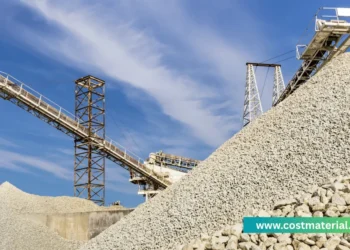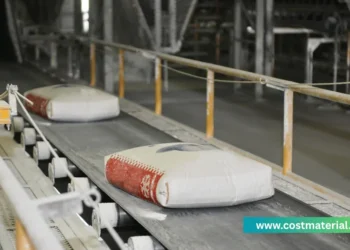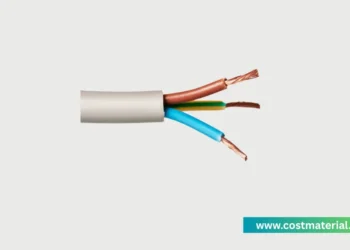Are you tired of scorching summer heat turning your home into an oven? Do you find your air conditioner working overtime, leading to sky-high electricity bills? If so, you are not alone. Many Filipino homeowners face this dilemma. Fortunately, there is a practical and effective solution: insulation foam. This comprehensive guide provides a detailed insulation foam price list for the Philippines in 2025. Consequently, you can make an informed decision for a cooler, more comfortable, and energy-efficient home.
Understanding the Importance of Insulation Foam
Before we delve into the numbers, let’s understand why insulation foam is a game-changer for homes in the Philippines. Our tropical climate means intense heat year-round. This heat penetrates our homes through the roof and walls. As a result, indoor temperatures rise, forcing us to rely heavily on cooling systems.
Insulation foam acts as a thermal barrier. It effectively slows down the transfer of heat. In fact, during hot days, it keeps the heat out. Conversely, on cooler nights, it can help retain a comfortable indoor temperature. This translates to significant energy savings. Moreover, a well-insulated home is a more comfortable home.
Types of Insulation Foam Available in the Philippines
Several types of insulation foam are available in the local market. Each has its unique properties, applications, and, of course, price points. Understanding these differences is crucial to selecting the right product for your needs.
Polyethylene (PE) Foam
PE foam is a common and affordable insulation material in the Philippines. It is lightweight, flexible, and easy to install. You will often find it with a foil backing. This foil enhances its reflective properties, further reducing heat absorption. PE foam is ideal for roof insulation, especially under metal roofing sheets. Furthermore, it provides a degree of soundproofing.
Spray Polyurethane Foam (SPF)
Spray Polyurethane Foam, or SPF, is a more premium insulation solution. It is applied as a liquid that expands into a solid foam. This expansion allows it to fill every nook and cranny. Consequently, it creates a seamless and airtight seal. SPF comes in two main types:
- Open-Cell SPF: This type is less dense and has a sponge-like texture. It is an excellent sound insulator. However, its thermal resistance (R-value) is lower than closed-cell foam. It is also permeable to vapor.
- Closed-Cell SPF: This is a denser and more rigid foam. It offers a higher R-value, making it a superior heat insulator. Additionally, it acts as a vapor barrier, preventing moisture buildup. This makes it a great choice for areas prone to humidity.
Rigid Foam Boards
Rigid foam boards are another popular option. They are made from materials like polystyrene (expanded or extruded) or polyisocyanurate. These boards offer high R-values and are very durable. They are versatile and can be used for walls, roofs, and even floors. Rigid foam boards are known for their long-term stability and performance.
Bubble Foil Insulation
Bubble foil insulation consists of one or two layers of air bubbles sandwiched between reflective foil sheets. It works primarily by reflecting radiant heat. This makes it highly effective for roof and attic insulation in our sunny climate. It is lightweight and easy to handle. Moreover, it is resistant to moisture and pests.
Insulation Foam Price List Philippines (2025)
Now, let’s get to the much-awaited insulation foam price list. Please note that these prices are estimates and can vary depending on the supplier, brand, location, and bulk purchase discounts. It is always best to request a formal quote from your chosen supplier.
| Insulation Foam Type | Product/Brand Example | Specifications | Estimated Price (PHP) |
|---|---|---|---|
| Polyethylene (PE) Foam | Generic PE Foam (Single Sided Foil) | 5mm thickness, 1m width | ₱50 – ₱70 per meter |
| Generic PE Foam (Double Sided Foil) | 5mm thickness, 1m width | ₱70 – ₱100 per meter | |
| Generic PE Foam (Single Sided Foil) | 10mm thickness, 1m width | ₱85 – ₱120 per meter | |
| Generic PE Foam (Double Sided Foil) | 10mm thickness, 1m width | ₱100 – ₱150 per meter | |
| Aluminum Foam Insulation (LPM Express) | 5mm, Single Sided Foil | ₱1,700 per roll (approx. 50m) | |
| Aluminum Foam Insulation (LPM Express) | 5mm, Double Sided Foil | ₱2,350 per roll (approx. 50m) | |
| Aluminum Foam Insulation (LPM Express) | 10mm, Double Sided Foil | ₱3,550 per roll (approx. 50m) | |
| Spray Polyurethane Foam (SPF) | DIY Can (Various Brands) | 500ml Can | ₱250 – ₱500 per can |
| DIY Can (Various Brands) | 750ml Can | ₱400 – ₱700 per can | |
| Professional Installation (Open-Cell) | Per square meter, 1-inch thickness | ₱400 – ₱650 | |
| Professional Installation (Closed-Cell) | Per square meter, 1-inch thickness | ₱700 – ₱1,200 | |
| Rigid Foam Boards | Polystyrene Board (EPS) | 4ft x 8ft, 1-inch thickness | ₱400 – ₱600 per board |
| Polystyrene Board (XPS) | 4ft x 8ft, 1-inch thickness | ₱600 – ₱900 per board | |
| Polyisocyanurate Board | 4ft x 8ft, 1-inch thickness | ₱800 – ₱1,300 per board | |
| Bubble Foil Insulation | Single Bubble, Single Foil | 1.2m width | ₱120 – ₱180 per meter |
| Single Bubble, Double Foil | 1.2m width | ₱150 – ₱220 per meter | |
| Double Bubble, Double Foil | 1.2m width | ₱200 – ₱300 per meter |
Disclaimer: This insulation foam price list is for informational purposes only. Prices are subject to change without prior notice.
Factors Affecting the Insulation Foam Price List
Several factors influence the final cost of your insulation project. Understanding these will help you budget effectively.
- Type of Foam: As seen in the price list, different foams have different price points. SPF is generally more expensive than PE foam.
- Thickness and Density: Thicker and denser foam provides better insulation. Consequently, it costs more. The required thickness will depend on your specific needs and climate.
- Brand and Supplier: Reputable brands may cost more. However, they often come with better quality and warranties. Prices can also vary between different hardware stores and suppliers.
- Installation Method: DIY installation can save you on labor costs. However, professional installation ensures the job is done correctly and safely. This is especially true for SPF.
- Project Size and Complexity: Larger and more complex projects will naturally cost more. This includes areas that are difficult to access.
DIY vs. Professional Installation: Weighing Your Options
A common question for homeowners is whether to install insulation foam themselves or hire a professional. Here’s a breakdown to help you decide.
DIY Installation
Pros:
- Cost Savings: The most significant advantage is saving on labor costs. This can be substantial for larger projects.
- Flexibility: You can work at your own pace and schedule.
Cons:
- Safety Risks: Handling some insulation materials, especially SPF, can be hazardous without proper safety gear.
- Potential for Errors: Improper installation can lead to gaps and reduced effectiveness. This can negate your savings in the long run.
- Time-Consuming: A DIY project can take significantly longer than a professional installation.
Professional Installation
Pros:
- Expertise and Experience: Professionals have the knowledge to recommend the right type of foam and install it correctly.
- Proper Equipment: They have the specialized equipment needed for a high-quality installation, particularly for SPF.
- Efficiency and Speed: A professional team can complete the job much faster than a DIYer.
- Warranty: Many professional installers offer warranties on their work and the materials used.
Cons:
- Higher Initial Cost: The main drawback is the upfront cost of labor.
For simple projects like laying PE foam in an accessible attic, a DIY approach might be feasible. However, for spray foam insulation or more complex applications, professional installation is highly recommended. The long-term benefits of a properly installed system often outweigh the initial savings of a DIY job.
Where to Buy Insulation Foam in the Philippines
You can find insulation foam at various hardware stores and construction suppliers across the Philippines. Here are a few places to start your search:
- Major Hardware Chains: Stores like Wilcon Depot, AllHome, and Handyman often carry a range of insulation products.
- Specialized Suppliers: Companies like LPM Express, Betafoam, and F.R. Sevilla specialize in insulation materials and can offer expert advice.
- Online Marketplaces: Platforms like Shopee and Lazada have numerous listings for DIY spray foam cans and other insulation products.
The Long-Term Benefits of Investing in Insulation Foam
While the initial insulation foam price list might seem like a significant expense, it is crucial to view it as a long-term investment. The benefits you will enjoy far outweigh the initial cost.
- Reduced Energy Bills: This is the most significant financial benefit. A well-insulated home can lead to savings of up to 40% on your cooling costs.
- Improved Comfort: Say goodbye to uncomfortably hot rooms. Insulation helps maintain a consistent and pleasant indoor temperature.
- Increased Property Value: An energy-efficient home is a more attractive prospect for potential buyers.
- Enhanced Soundproofing: Insulation foam can significantly reduce noise from outside, creating a quieter and more peaceful living environment.
- Moisture Control: Closed-cell spray foam, in particular, can help prevent moisture-related problems like mold and mildew.
Summary
Investing in insulation foam is a smart move for any Filipino homeowner. It offers a practical solution to combat the relentless heat, reduce energy consumption, and create a more comfortable living space. Our detailed insulation foam price list for 2025 provides a solid starting point for budgeting your project.
Remember to consider the different types of foam, their respective benefits, and the pros and cons of DIY versus professional installation. By making an informed choice, you can enjoy the long-term rewards of a cooler, quieter, and more energy-efficient home for years to come. Start your journey towards a more comfortable life today. You will be glad you did.
Did you find this blog post helpful? Share it to others! For more construction material price lists, check our other blog post.





